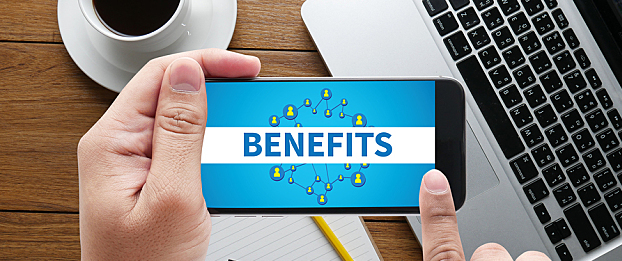Five Easy Ways To Help Employee Understand and Choose Their Benefits

Employee benefits are an important recruiting tool. According to the Society for Human Resource Management, nearly a third of organizations increased their overall benefits offerings in the last 12 months as a way to compete for talent. While most employees prioritize health care benefits in their job choices, employees don't always fully understand what those benefits mean.
That's where you come in. As an HR professional, it's your job to help employees understand and select their best options. Instead of spending time lecturing in a classroom setting, make the process easier for everyone by leveraging a user-friendly, multi-channel approach.
1. Your Benefits Portal
While enrollment season puts the spotlight on benefits, questions and concerns come up year-round. An employee benefits portal is your organization's hub of information, so you should strive to create a personalized experience. For example, offer tools that help employees compare plan features, calculate flexible spending options and estimate out-of-pocket medical costs. A well-designed employee portal will help employees quickly get the answers they need.
2. Digital Content
Americans spend nearly five hours a day on smartphones and tablets, according to the analytics firm Flurry. Bring employee benefits information to them by creating on-demand content. Quick tutorials can be created as videos, slide shares or podcasts, to address a single topic. Pay attention to the most frequently asked questions to decide which areas to cover. Some companies are finding success by developing a mobile app that provides information, per Forbes. The ADP Research Institute® found that mobile access to HR information can be 60 percent more engaging for employees than traditional web access. You can also upload general information to the careers page of your website, which can help with recruiting. Target, for example, includes videos of employees talking about their personal experiences with the retailer's benefits package.
3. Mixed Messages
Remind employees of open enrollment or policy changes by sharing quick updates with a mix of messages. Email is a traditional form of communication, but you shouldn't stop there. More than 40 percent of consumers check their phones within five minutes of waking up, looking at text messages first, according to a study by Deloitte. Sending text messages helps ensure employees receive your communication instead of risking the message is lost in an inbox. You can also send messages via social media, leveraging your Facebook, LinkedIn and Twitter accounts. While it seems like an unusual approach, it's growing in popularity as employees spend more time on social platforms. For example, IKEA used Twitter to contact employees about open enrollment. The furniture retailer sent tweets such as, "If I don't enroll in benefits now, can I do it later? Go here b4 it's too late," including links to the retailer's benefits website, according to Benefit Focus.
4. Meetings
While not the most tech-savvy, live meetings are still effective, especially for employees who prefer to receive information in person. While delivering information in a classroom setting is an option, consider holding lunch-and-learn sessions that will entice employees to attend. You can provide a healthy meal or invite employees to brown bag it. If your staff is remote, webinars are a great option with employees joining virtually and asking questions via audio or online chat.
5. Incentives
Finally, asking employees to read benefits materials can feel like assigning homework, and not everyone is going to get an A — so it can help to get creative. Pierre-Renaud Tremblay, director of human resources for steam cleaning products company Dupray, started creating online quizzes about the benefits information he shared via email. After offering employees meal vouchers for good scores, his open rate jumped from 12 percent to 85 percent, according to Forbes.
Employee benefits are a valued perk, but they can be confusing. By using a multi-channel approach, you should be able to increase your chances of having employees understand their options and help them make the best enrollment decision possible.
Stay up-to-date on the latest workforce trends and insights for HR leaders: subscribe to our monthly e-newsletter.



